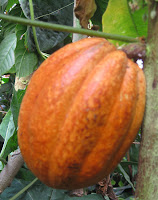

The Christmas Cactus, also known as Schlumbergera, are going strong. They are easy-to-grow and some of the new colors are just breathtaking. My favorite is Schlumbergera 'Cristen' with its bright, electrifying pink color.

The common name Christmas Cactus refers to its blooming season. Although, the varieties shown below actually start blooming in the fall and can bloom all the way into late winter.
Here is an array of colorful Christmas Cactus.
The bright pink is called Schlumbergera 'Cristen.'

The salmon colored group is called Schlumbergera 'Christmas Flame.'

The white with pink edges is Schlumbergera 'Thor Tena.'

The salmon colored group is called Schlumbergera 'Christmas Flame.'

The white with pink edges is Schlumbergera 'Thor Tena.'
Here a trio of Christmas Cactus ready to go out the door.

In the center is Schlumbergera 'Thor Carmen'

In the center is Schlumbergera 'Thor Carmen'
Remember to care for Schlumbergera, they need to dry out between watering. They can be susceptible to root fungus, if they are kept too wet. Also, partial sun to shade is fine for light requirements. It is the shortened day length and cool night time temperatures that induce bloom. Prune after flowering and during active growth feed 1/2 tsp of balanced fertilizer (7-9-5) to 1 gallon of water every two weeks.
Christmas Cactus can grow for years in the same pot and cuttings can be given to friends and family. It's not unusual to hear someone say, "That's my grandmother's christmas cactus that I've had since my childhood."
Happy New Year!
















































